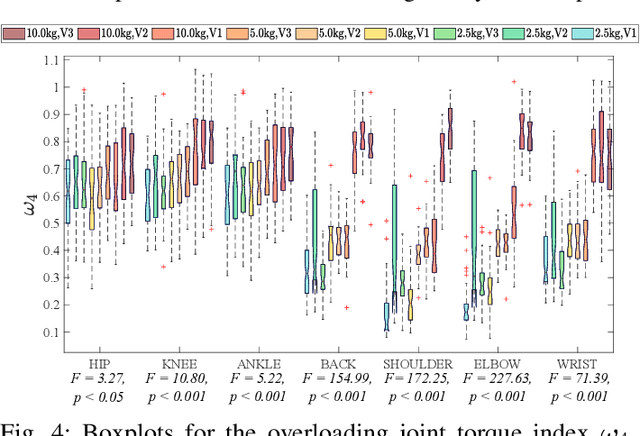An Online Multi-Index Approach to Human Ergonomics Assessment in the Workplace
Paper and Code
Nov 11, 2021



Work-related musculoskeletal disorders (WMSDs) remain one of the major occupational safety and health problems in the European Union nowadays. Thus, continuous tracking of workers' exposure to the factors that may contribute to their development is paramount. This paper introduces an online approach to monitor kinematic and dynamic quantities on the workers, providing on the spot an estimate of the physical load required in their daily jobs. A set of ergonomic indexes is defined to account for multiple potential contributors to WMSDs, also giving importance to the subject-specific requirements of the workers. To evaluate the proposed framework, a thorough experimental analysis was conducted on twelve human subjects considering tasks that represent typical working activities in the manufacturing sector. For each task, the ergonomic indexes that better explain the underlying physical load were identified, following a statistical analysis, and supported by the outcome of a surface electromyography (sEMG) analysis. A comparison was also made with a well-recognised and standard tool to evaluate human ergonomics in the workplace, to highlight the benefits introduced by the proposed framework. Results demonstrate the high potential of the proposed framework in identifying the physical risk factors, and therefore to adopt preventive measures. Another equally important contribution of this study is the creation of a comprehensive database on human kinodynamic measurements, which hosts multiple sensory data of healthy subjects performing typical industrial tasks.
 Add to Chrome
Add to Chrome Add to Firefox
Add to Firefox Add to Edge
Add to Edge